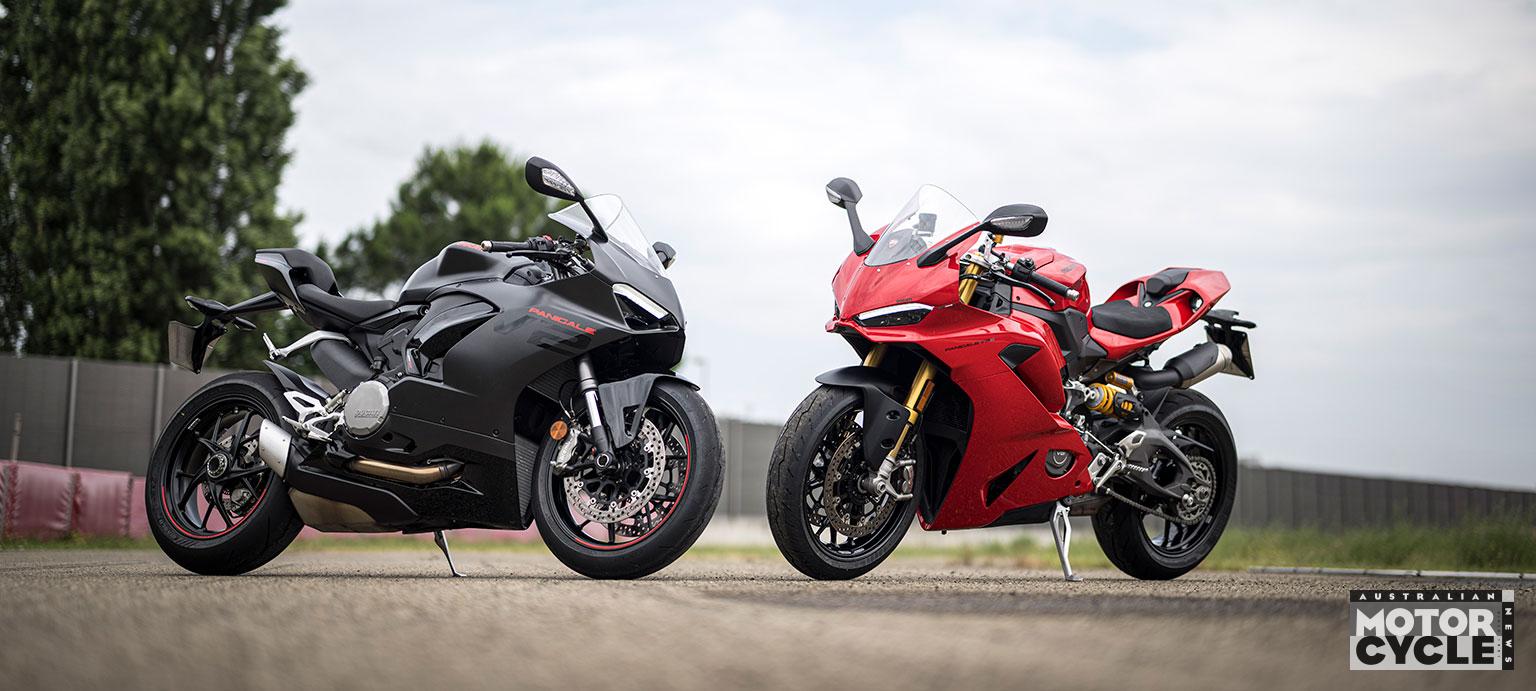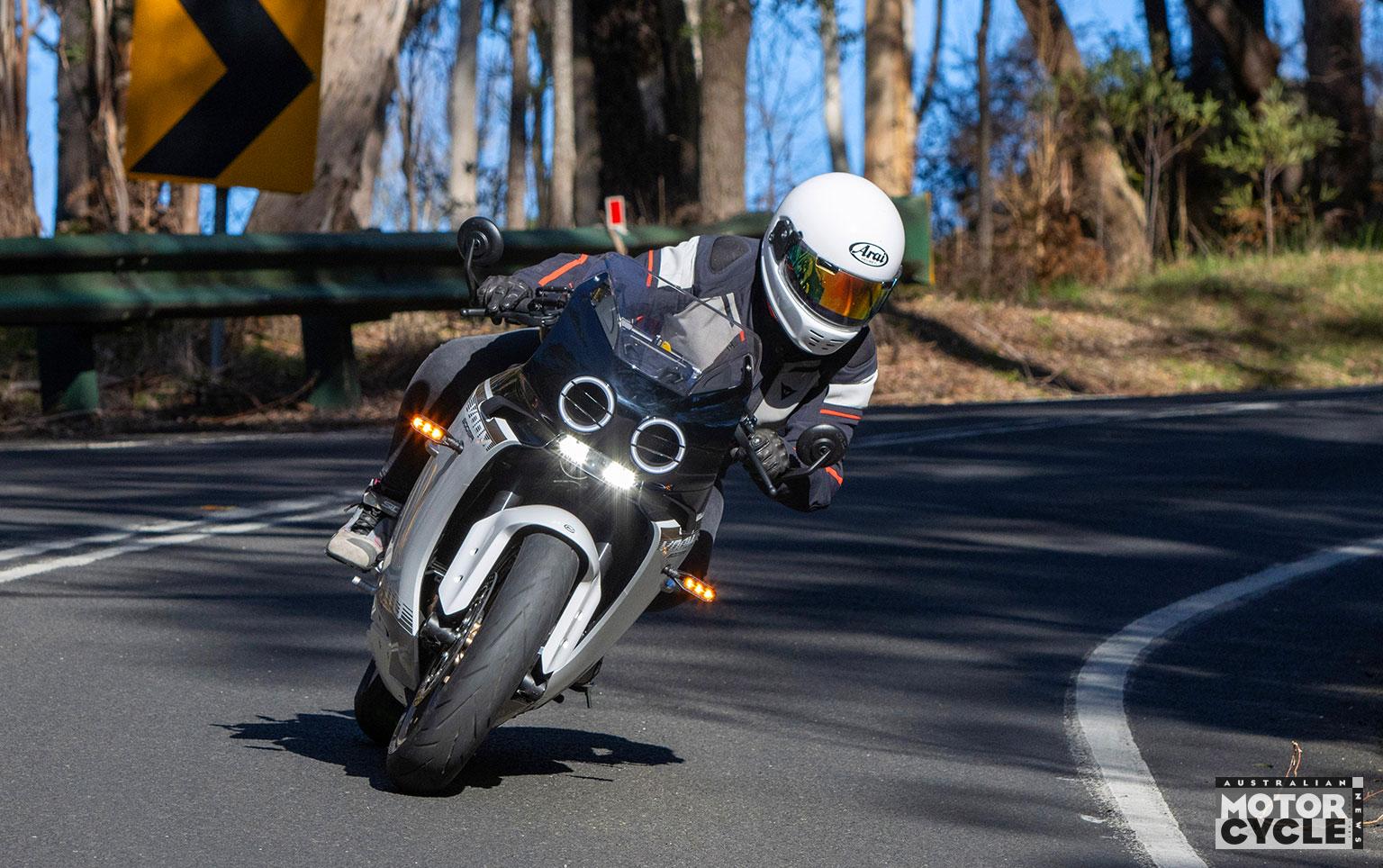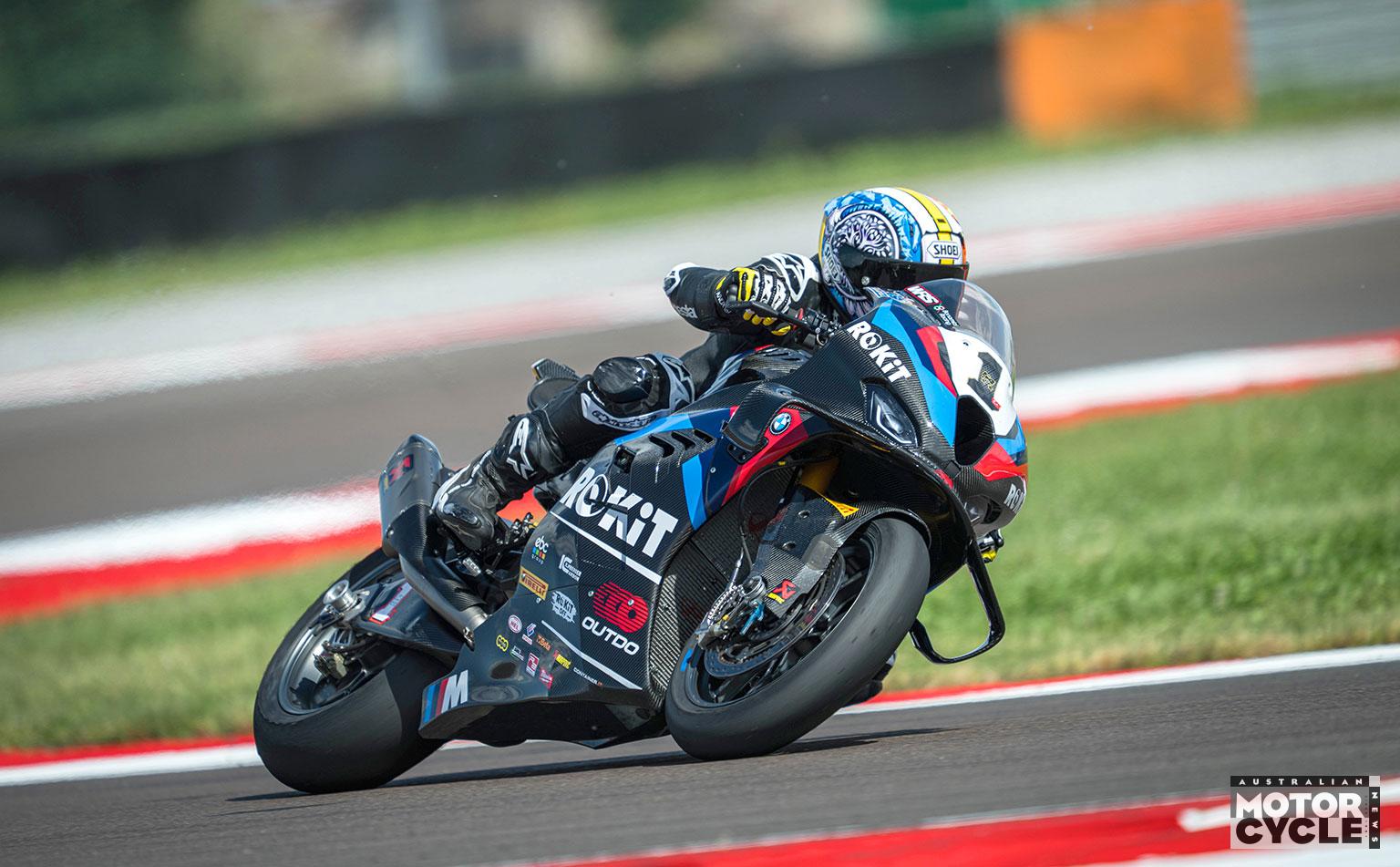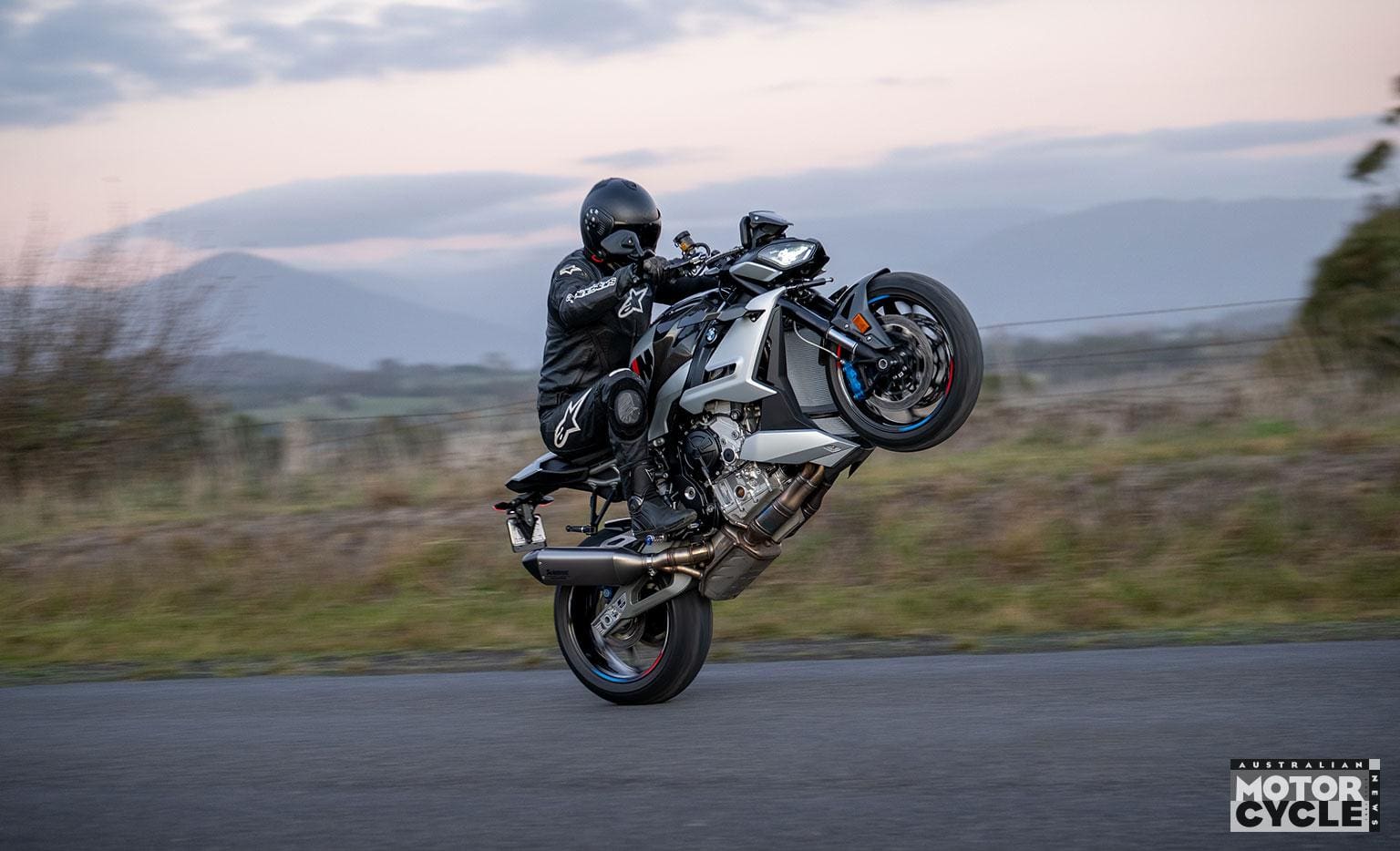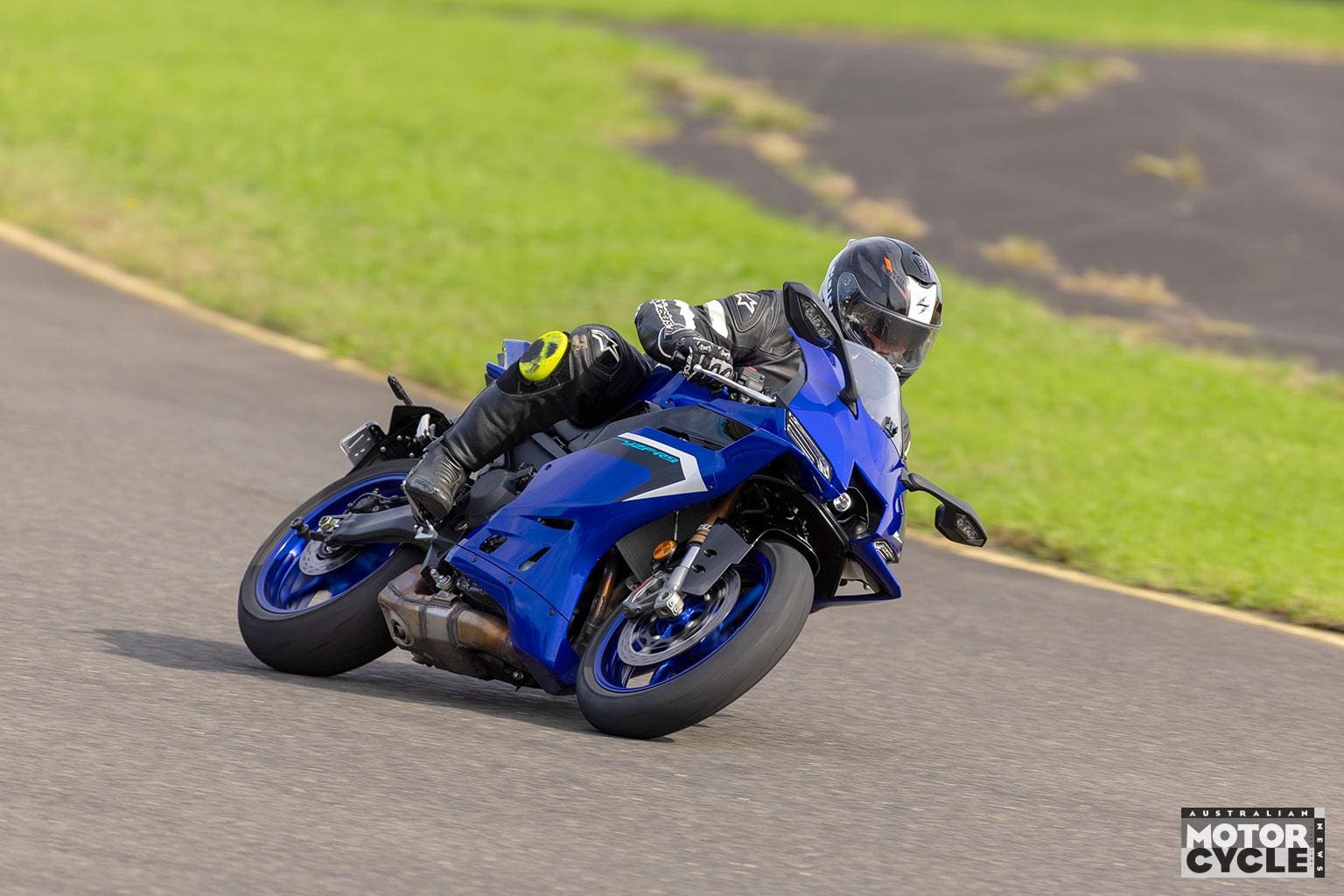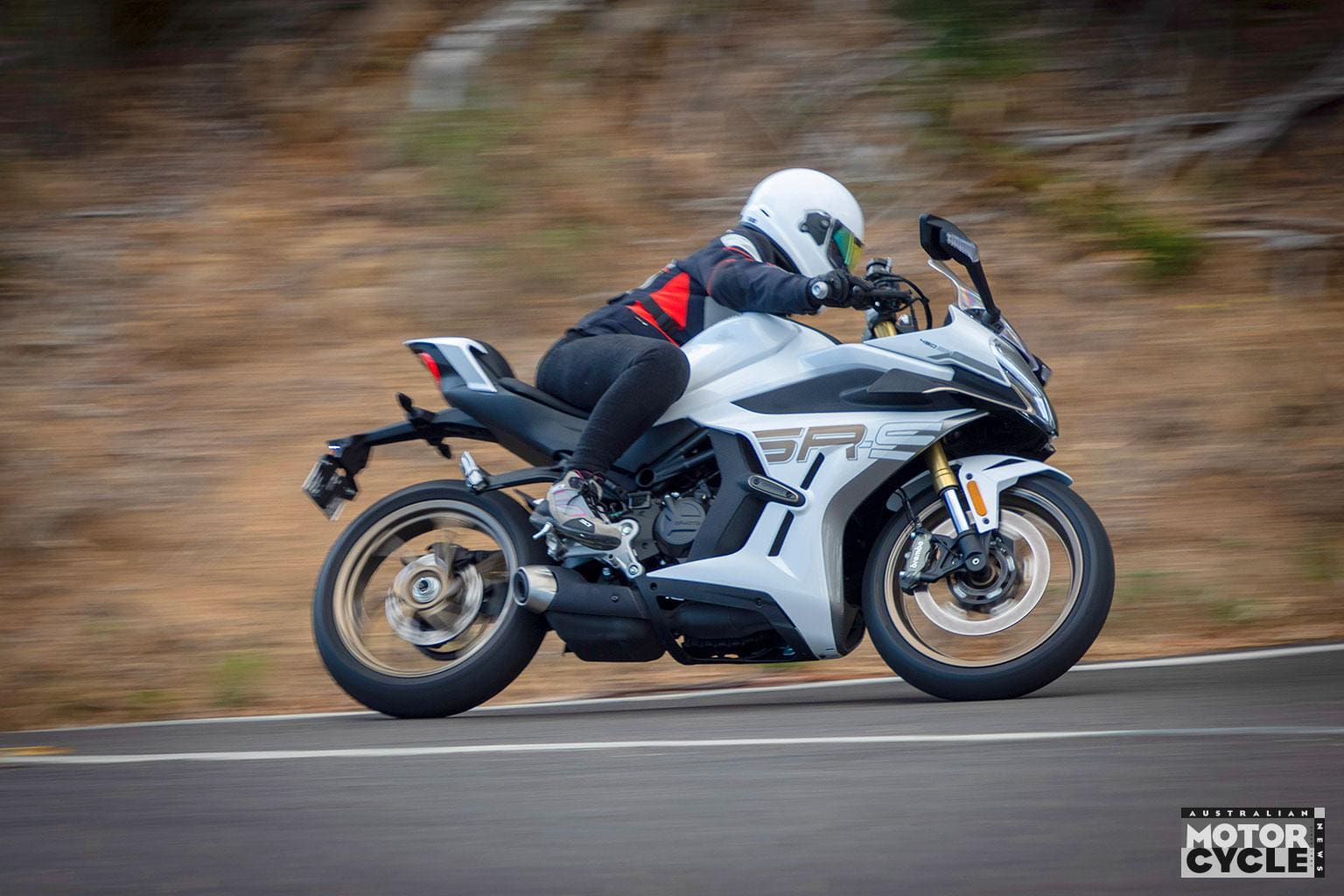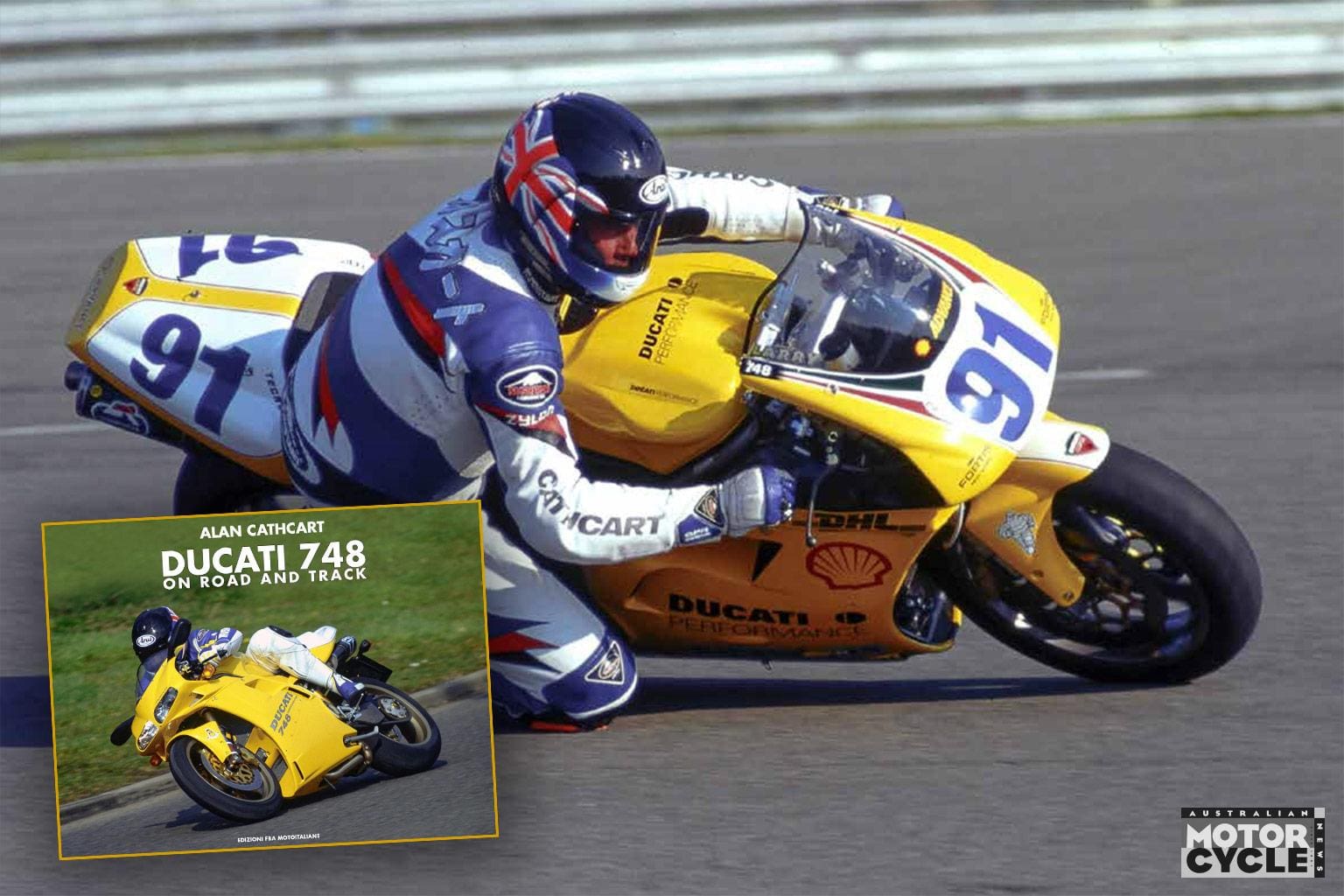Despite dominating the UK’s National Superstock series in 2023 and claiming a prestigious win in the Superbike race at the Isle of Man TT races last June, racing success on the world stage has been conspicuously absent for Honda’s Fireblade in recent years – especially in the all-important Superbike World Championship. But rather than close the lid on production of its inline four-cylinder 1000cc superbike, as Suzuki (Europe) and Yamaha (Europe) have done, Honda continues to push back against the Ducati V4 Panigale that has so dominated on the world stage with a heavily revised and race-focused CBR1000RR-R SP.

Redrawn aero bodywork aside, it’s easy to assume the 2024 model is a fairly routine update but Honda has given its performance flagship a serious injection of cutting-edge electronic technology. This includes separate twin-motor ‘split’ throttles and a raft of developments, such as lighter engine internals, a revised frame and swingarm, and Smart EC3 Öhlins suspension. While the onus is squarely on improving racetrack performance, a new riding position, a stronger midrange and revised gearing should be welcomed by road riders as well.
We headed to one of the fastest and most challenging tracks in Europe, Portimão in Portugal, to put the new and highly advanced Blade through its paces.
MORE CONTROL
HRC engineers could undoubtedly have created an even more powerful beast than the outgoing 2023 Fireblade but opted instead to focus on producing a package that drives harder out of corners. It does this with more control and efficiency.

In a heavily updated engine, lighter valves, new valve springs, revised valve timing and port profiles, along with a compression ratio increased to 13.6:1, are aimed at smoothing and boosting midrange torque, while a lighter crankshaft and titanium conrods help reduce crank inertia and sharpen throttle response. Peak power and torque figures remain at 160kW (214.5hp) and 113Nm, but those numbers now arrive lower in the rev range at 14,000rpm (down from 14,500rpm) and 12,000rpm (down from 12,500rpm) respectively.
The fuel delivery is now handled by Honda’s Two Motor Throttle By Wire control, or split throttle bodies as they are more generally known. This system operates two cylinders separately from the other two. In theory this gives a smoother, more precise throttle response – and stronger drive – as one pair of cylinders is fed in after the other on an opening throttle, as well as stronger engine braking when the throttle is closed.
Easier access to the Blade’s immense power output is consolidated by a new gearbox featuring shorter ratios for punchier drive. Honda has also installed a new titanium exhaust system with a larger (by one-litre) Akrapovic end can, which is quieter and less likely to attract the trackday noise police than the 2023 model.
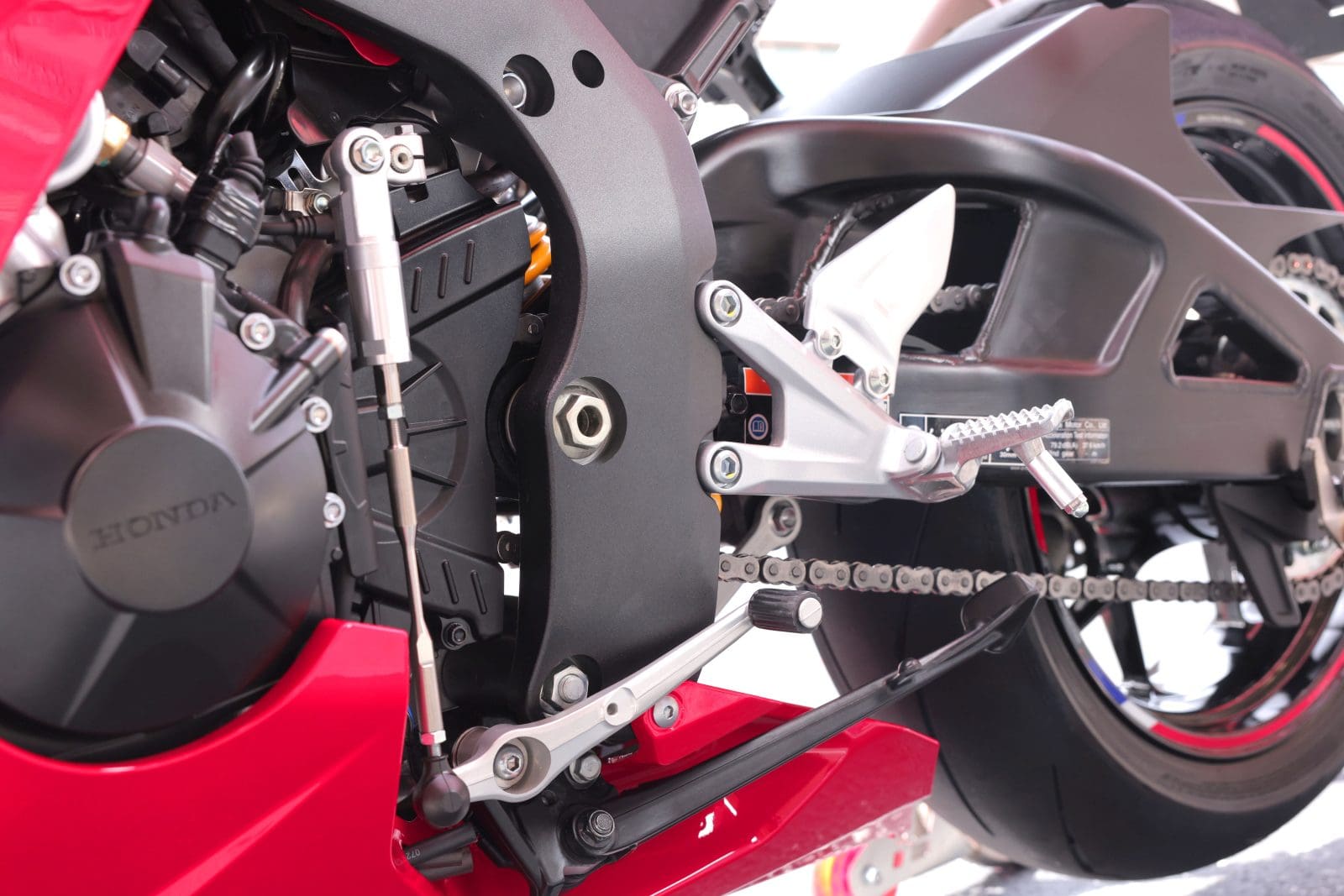
Chassis-wise, the emphasis is on heightened feel and accuracy so the 2024 Fireblade SP gets a new and lighter frame with modified wall thickness that reduces lateral stiffness by 17 percent and rigidity by 15 percent. There’s a RC213V-derived swingarm and, for the first time on a production machine, Öhlins SMART EC3 electronically controlled suspension, featuring updated settings for its 43mm NPX forks and TTX36 rear shock.
As you’d expect, there is an abundance of high-spec electronic rider aids to keep you on track. A Bosch Six Axis IMU enables cornering ABS that now gets a ‘Race’ mode, and nine levels of traction control (HSTC) are tailored to match the new power and torque characteristics. There is also launch control, wheelie control, rear wheel lift prevention and new Two Motor TBW-metered engine brake strategies. The IMU is also in communication with the Smart EC3 suspension and three-level electronic steering damper. There is even a quickshifter with three settings: soft medium and hard.
Honda has clearly set out to win races with its new Fireblade SP, but the road rider has also been accommodated with 19mm higher ’bars and 16mm lower footpegs to give a more relaxed riding position. There’s a slightly larger fuel tank and even an updated TFT dash that now has a low-temperature mode, which drops the redline to 8000rpm to protect a cold engine from over-enthusiastic revving.

On top of all that, there is new bodywork with distinctive winglets. These don’t create more downforce but reduce yaw by a claimed 10 percent, which should make the Honda feel lighter in high-speed corners and show your mates you’re on a new 2024 model (which is scheduled to land in Australia in the third quarter).
There simply isn’t the space here to cover all the technological and mechanical developments Honda has introduced. Certainly, there wasn’t the time on test to scratch the surface of the set-up options made possible by the myriad rider aids, riding modes and smart suspension. There is, for example, a new preload guide displayed on the dash into which you can input your weight and which, in return, will suggest (manually adjustable) pre-load settings.
ON TRACK
Portimão is a fast, demanding roller-coaster of a MotoGP track that I know well. I rode the 2017 Fireblade here and, more recently, the Ducati Panigale V4 S, while I have plenty of experience on the 2023 Blade, too. I had also done my research, sat through a long and informative presentation, and chatted to Honda engineers and TT legend John McGuinness, who warned me to expect something special. But I didn’t expect this.

First the engine. On paper, peak power and torque are unchanged but the 2024 bike feels so much stronger and drives so much harder you’d swear it has 20 horses more. The drive is immense. Even as I grabbed fifth gear on the start/finish straight at just shy of 300km/h, the Blade was still stampeding towards the horizon. Honda claims it is the most powerful inline four-cylinder on the market, and I believe them. I was expecting it to be fast – after all, the older model doesn’t exactly hang around – but this is the next level.
But it’s not all about mind-bending power. The precision and smoothness of the throttle response (along with the addictive sound from the split throttle bodies and gurgle of the Akrapovic) seem to turn you into a WSBK rider, well almost. There isn’t a step in power or a noticeable kick when all four butterflies open; it’s all very smooth, easy and typically Honda. The first connection of the throttle, when you start to request power, is where the Blade SP excels. I had the power set to ‘P1’ – which is high, with high throttle response and full torque split – but it didn’t feel aggressive or snappy. When you are on the edge of the tyre, transferring from a closed to open throttle, you want that delivery to be damped yet precise and give the electronics and rear tyre an easy time – and that is exactly what it does. I could get on the power a little earlier and earlier each lap, relying on the split throttle, which so cleverly meters torque to the back tyre.
Having such brutal power delivered so smoothly (and precisely) makes for a slightly unusual feeling, especially around Portimão. It’s like having an iron fist with the fingers of a concert pianist. Countless racebikes have the same power, no problem, but are abrupt and unfriendly at low speed or on small throttle openings, while user-friendly bikes usually lack excitement at the top end. The Blade, however, has the ability to both break lap records and remain friendly enough not to be too scary.

The chassis is equally as impressive as the engine, even though the changes for 2024 are less dramatic. The new Smart EC3 Öhlins suspension is either semi-active, with active compression and rebound damping (in A modes Track, Sport and Rain) or fixed (in M modes 1, 2 and 3) with the damping not active. Spring preload is set and has to be changed manually with tools, however that weight input guide makes the process far simpler and quicker than usual.
For the first session (run on Pirelli slicks) I opted for A (for Automatic) Sport mode. Then simply by pushing a button changed to A Track mode whilst on the move. In recent years semi-active or automatic suspension has come a long way, so far in fact that it’s sometimes hard to tell if the suspension is active or conventional. That’s the case here. The feel and feedback, often an active system’s weak points, are excellent as is the control and response – and it works all but perfectly out of the box, even on Portimão’s crazy mix of high-G and low-G corners.
For session two, I entered my weight into the dash and then dialled in the recommended preload settings. Our testbike was set to a 75kg rider’s weight as standard and I went to 80kg, not a huge jump but enough make it a little less wheelie prone and even easier to ride than in session one. Small change, significant difference – and proof of the quality of the Öhlins units.

I can’t remember getting on the old bike with over 200 horsepower and immediately feeling so at home and comfortable. While the suspension must take credit, so too should the improved ergonomics as now you have more room to move around. Perhaps, too, some of the new Blade’s forensic feedback might be down to the new chassis with more flex, but it’s hard to compare without riding the new and old bike back to back.
It’s a shame we only got a few dry sessions before the weather closed in towards the end of the day, just when it was time to put heads down and start to push for a fast lap. I only tried the Automatic suspension, not the manual. Again I only brushed the surface of the rider aids’ full potential.
With more time, I’d especially like to try the Two Motor TBW-assisted engine brake system. There are three levels of engine braking: EB1, EB2 and EB3, which are high, medium and reduced, with the latter two able to create more engine braking than a conventional system.
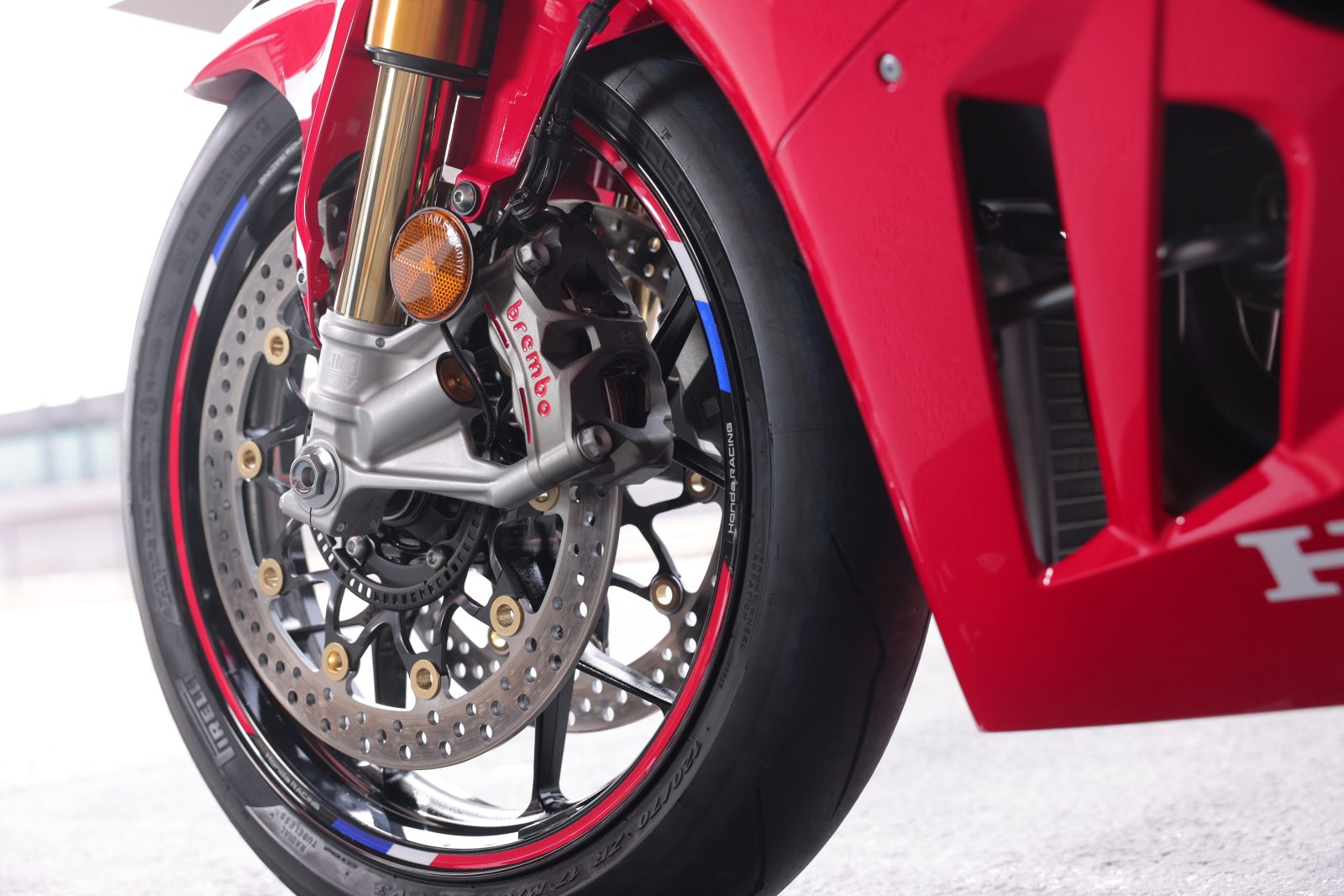
Talking of braking, there are now three modes available for the cornering ABS: Standard, Track and Race. In Race, the front ABS has no cornering function and there’s no rear ABS or rear lift control – which itself is new for this year. The Brembo Stylema R calipers, meanwhile, are superbly strong and consistent, and every lap made me think I could have braked later. The combination of excellent Öhlins and cornering ABS means you can take real liberties into fast corners, something it took me a while to get my head around.
As you are probably starting to gather, I was impressed with Honda’s new Blade; it is seriously hard to fault. As a rider who prefers steak over salad, though, the frontal area is a little small – taller riders are going to struggle to tuck in, too – and the dash and switchgear are a little complicated. If you’re going to extract the most from the new Fireblade SP you will also have to weigh yourself before riding to get the perfect suspension set-up, which is never particularly pleasant, and you can’t lie.
VERDICT
Breathtaking and barking mad were the first words to come out of my mouth after my ride. Looking at the changes on paper, I didn’t think the 2024 Honda Fireblade SP was going to be such a big step forward but once ridden it’s clear it is both quicker over a lap and easier to ride fast.

To put that into context, the 2023 bike was dominant in the UK’s road-based National Superstock championship last season, and the 2024 Blade is a step in front in every area. The inline-four has more midrange and more drive and is also more usable thanks to the Two Motor Throttle By Wire system, which, by the way, sounds fantastically racy too. Meanwhile, a new frame and automatic Smart EC3 suspension combine to feed the rider with more feel and confidence than ever. The road rider hasn’t been forgotten about either as the riding position is roomier than before and the improved spread of torque will make the Blade even more of tool on brisk Sunday rides.
The brevity of this test makes it impossible to quantify how much Honda has improved the new Blade over the previous model or where it will sit in the superbike hierarchy. BMW’s M 1000 RR inline-four is likely to be its closest competition and Yamaha’s R1M can’t be underestimated. But the strongest competition could come from Italy, from Aprilia and Ducati.
Will the improvements made by Honda turn the Blade back into a WSBK winning bike? Only time will tell but I almost don’t care. The 2024 Honda CBR1000RR-R SP is thrilling to ride, a genuine road-legal racebike with headlights. As other manufacturers drop out of the 1000cc sportsbike class, Honda has to be applauded for continuing to produce something very special.
PROS: A huge step forward in performance. Not only is it quicker over a lap but it’s easier to ride fast on track.
CONS: Frontal area is a little too small for taller riders and the dash and switchgear are a little complicated to use.
TEST: ADAM CHILD PHOTOGRAPHY: HONDA EUROPE
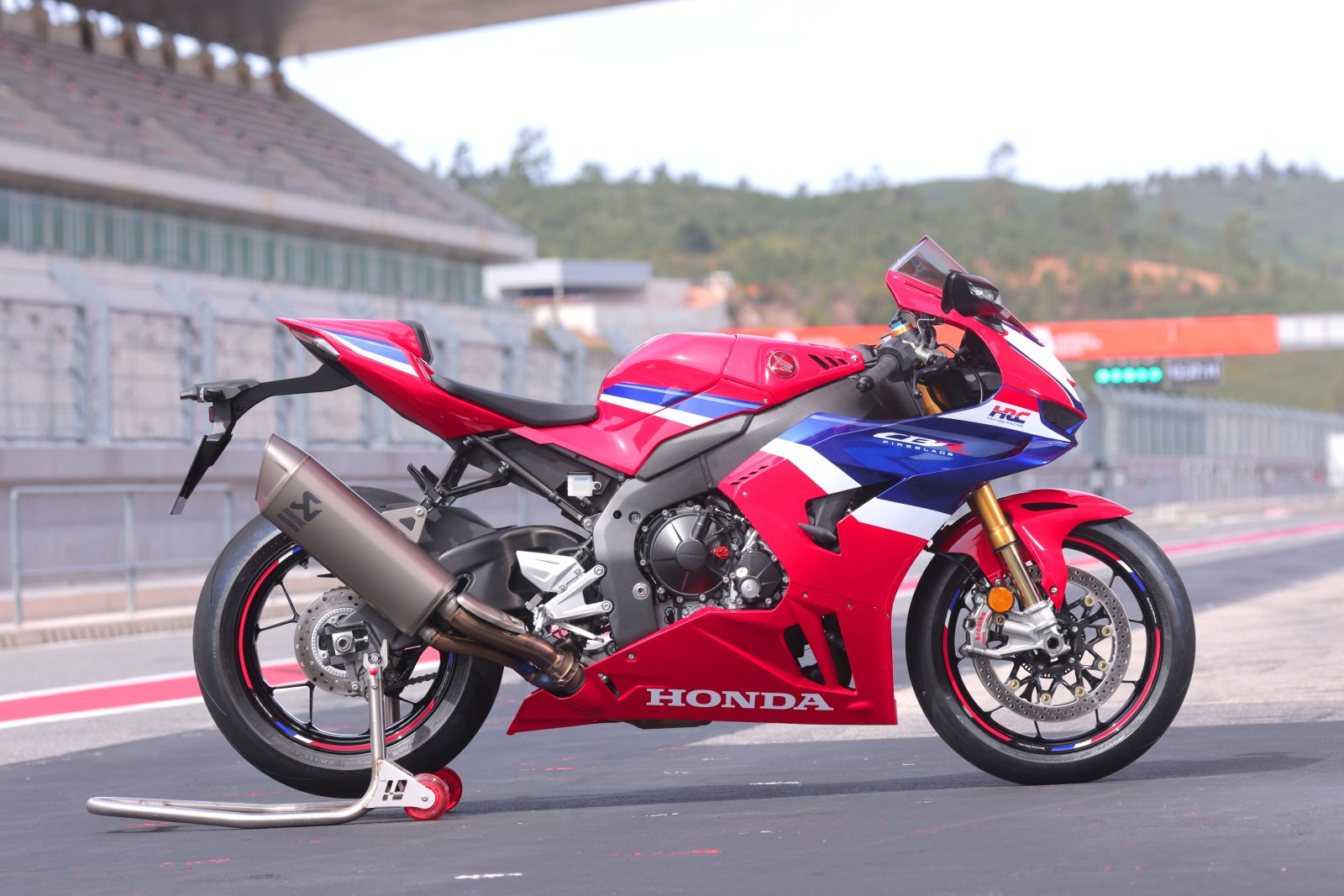
RACE TECH
The swingarm is derived from the RC213V MotoGP bike and, for the first time on a production machine, Öhlins SMART EC3 electronically controlled suspension is used.
COMFORT PLUS
The riding position is more relaxed with handlebar height raised 19mm. Handlebar distance from seat is down 23mm to 726mm, the footpegs are 16mm lower and there’s a larger and reshaped 16.5L fuel tank.
ON A DIET
Engine crankcases are 250g lighter, crankshaft 450g lighter and conrods 20g lighter each. The total weight saving, including many other minor tweaks, is a credible 595g.
FRAME UP
The aluminium frame is 960g lighter with lateral stiffness reduced 17 percent and torsional stiffness 15 percent. The headstock is revised and engine bolts are shorter and lighter.
WIRED UP
Two Motor Throttle By Wire is a first for Honda. Throttle valves 1 and 2 operate separately to 3 and 4. Initially 1 and 2 open then 3 and 4, until all four work together.
THE COMPETITION
Yamaha YZF-R1M
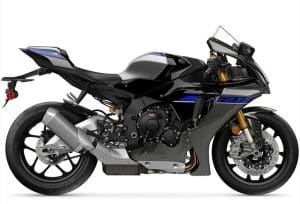
$39,349 ride away
147kW
112.4Nm
201kg (wet, claimed)
Ducati Panigale V4 S

$45,000 ride away
160kW
123Nm
195kg (wet, claimed)
Aprilia RSV4 Factory 1100
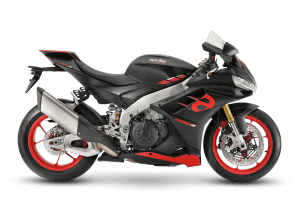
$39,090 ride away
160kW
125Nm
202kg (wet, claimed)
DREAM TEAM SET FOR TT CHALLENGE

The upcoming Isle of Man TT will be a true test of the new Fireblade in road conditions
As ever Honda is putting in a huge effort to achieve more success at the Isle of Man TT in 2024. The official line-up consists of Manx local Nathan Harrison with Dean Harrison and John McGuinness. At just 25 Nathan has shown potential, winning the Manx GP in 2019, but was sadly injured at the North West 200 last year. Dean, Senior TT winner in 2019 and regular podium finisher, joins the team in 2024. He is the second fastest man around the TT circuit, and comes with a wealth of road racing experience. As ever TT legend John McGuiness MBE spearheads the team. John finished sixth in the Superbike race and seventh in the Senior last year, and is still a force to be reckoned with.
Last year’s Superbike winner Michael Dunlop is also expected to be Honda mounted on his private 2024 Honda Fireblade. In last year’s Senior there were six Honda Fireblades in the top 10; this year there could be even more.
SPECS
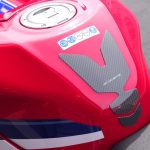
ENGINE
Capacity 999.9cc
Type Inline four cylinder,DOHC, four valves per cylinder
Bore & stroke 181mm x 48.5mm
Compression ratio 13.6:1
Cooling Liquid
Fueling PGM-FI
Transmission Six-speed
Clutch Dry, single disc
Final drive Chain
PERFORMANCE
Power 160kW (214.5hp) @ 14,000rpm (claimed)
Torque 113Nm @ 12,000rpm (claimed)
Top speed 300km/h (est)
Fuel consumption 6.7L/100km (claimed)
ELECTRONICS
Type Not given
Rider aids Cornering ABS, traction control, wheelie control and engine
brake control
Rider modes Track (1), Sport (2), Rain (3) and User
CHASSIS
Frame material Aluminium
Frame type Twin tube
Rake 24°
Trail 102mm
Wheelbase 1455mm
SUSPENSION
Type Öhlins
Front: 45mm, NPX S-EC3.0, fully adjustable, 125mm travel
Rear: Monoshock, TTX36 S-EC3.0, fully adjustable, 143mm travel
WHEELS & BRAKES
Wheels Aluminium
Front: 17 x 3.5 Rear: 17 x 6.0
Tyres Pirelli Diablo Supercorsa SP V3
Front: 120/70-17
Rear: 200/55-17
Brakes Brembo
Front: Twin 330mm discs, four-piston Stylema calipers
Rear: Single 220mm disc, twin-piston caliper
DIMENSIONS
Weight 210kg (kerb, claimed)
Seat height 830mm
Width 745mm
Height 1140mm
Length 2100mm
Ground clearance 115mm
Fuel capacity 16.5L
servicing & warranty
Servicing First: 1000km
Minor: 12,000km
Major: 24,000km
Warranty Two years, unlimited kilometres
BUSINESS END
Price TBC
Colour options Grand Prix Red or Matt Pearl Morion Black
Contact motorcycles.honda.com.au
